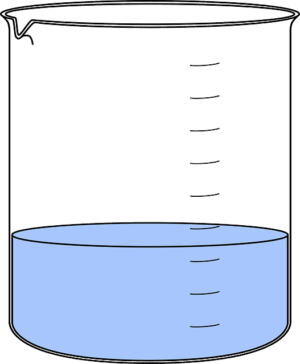In today's globalized science landscape, the demand for Laboratory Reports and Scientific Data in multiple languages is crucial for international collaboration and progress. Accurate translations are essential to preserve data integrity, avoid misunderstandings, and foster inclusivity among researchers from diverse linguistic backgrounds. Advanced machine translation technologies, supported by human expertise, streamline workflows and handle complex scientific terminology, ensuring reliable and consistent communication globally. This accessibility empowers scientists worldwide to share knowledge, collaborate, and accelerate discoveries across disciplines.
In today’s globalized scientific landscape, ensuring accessibility of laboratory reports and scientific data across diverse linguistic barriers is more critical than ever. The Growing Need for Multilingual Translation in Science explores this imperative, delving into the challenges and benefits associated with translating essential research documents. We dissect complex issues, highlight the importance of clear communication, and propose effective solutions to implement seamless multilingual translation for laboratory reports and scientific data.
- The Growing Need for Multilingual Translation in Science
- Challenges in Translating Laboratory Reports and Scientific Data
- Benefits of Multilingual Support for Research and Collaboration
- Implementing Effective Multilingual Translation Solutions
The Growing Need for Multilingual Translation in Science
In today’s globalized scientific landscape, the need for multilingual translation services for laboratory reports and scientific data has never been more pressing. As research becomes increasingly international, with collaborations spanning continents and publications targeting worldwide audiences, ensuring accessibility and clarity across language barriers is essential. Scientists and researchers must be able to share their findings seamlessly, regardless of their native tongue, to foster collaboration, advance knowledge, and drive innovation.
Multilingual translation plays a crucial role in breaking down these language walls. It enables scientists from diverse linguistic backgrounds to communicate effectively, collaborate on groundbreaking research, and contribute to the global scientific community. By translating laboratory reports and scientific data into multiple languages, we democratize access to information, promote inclusivity, and ensure that valuable insights are not confined to specific linguistic groups. This growing demand reflects a broader trend in science: recognizing the power of diverse perspectives and voices to enrich our understanding of the world around us.
Challenges in Translating Laboratory Reports and Scientific Data
In the realm of scientific communication, Laboratory Reports and Scientific Data play a pivotal role in sharing knowledge and advancing research globally. However, translating these documents presents unique challenges due to their technical nature and specific terminology. Each language has its own set of terms for scientific concepts, making accurate translation a complex task.
Additionally, maintaining the integrity of data and ensuring that nuances and context are preserved across translations is essential. Scientific writing often involves subtle references, specialized jargon, and precise measurements, which can be difficult to convey equivalently in another language. Inaccurate or inconsistent translations may lead to misunderstandings, misinterpretations, and potential errors in subsequent research and analysis, emphasizing the need for meticulous attention to detail during the translation process for Laboratory Reports and Scientific Data.
Benefits of Multilingual Support for Research and Collaboration
In today’s global scientific community, multilingual support for laboratory reports and scientific data is no longer a luxury but an essential tool for facilitating research and collaboration. By breaking down language barriers, researchers from diverse linguistic backgrounds can effortlessly share their findings, insights, and innovations. This enables more inclusive and extensive knowledge exchange, fostering a vibrant tapestry of ideas that can accelerate discovery and progress in various fields.
Multilingual translation ensures accessibility to a broader audience, allowing scientists who may not be fluent in the primary language of a report or dataset to still interpret and build upon existing work. This promotes international cooperation, as researchers can collaborate seamlessly regardless of their native tongue. As a result, it enhances the impact and relevance of laboratory reports and scientific data on a global scale, ultimately advancing our collective understanding of the world around us.
Implementing Effective Multilingual Translation Solutions
In today’s globalized scientific landscape, ensuring accessible and accurate laboratory reports and scientific data across diverse linguistic landscapes is paramount. Implementing effective multilingual translation solutions isn’t merely about translating words; it’s about preserving the integrity of critical information while fostering international collaboration. Advanced machine translation technologies, enhanced by human expertise, play a pivotal role in this process. These tools are capable of handling complex scientific terminology, ensuring precise translations that maintain the original meaning and context.
For research institutions and laboratories, integrating these solutions can streamline workflows significantly. Automated translation processes not only save time but also reduce the potential for errors introduced through manual translation. Moreover, leveraging machine learning capabilities allows systems to improve over time, adapting to specific scientific domains and terminologies. This ensures that laboratory reports and scientific data remain reliable and consistent across languages, enabling seamless communication among researchers worldwide.
In an increasingly globalized scientific landscape, the demand for accurate and seamless multilingual translation of laboratory reports and scientific data is paramount. Overcoming challenges through innovative solutions ensures that knowledge barriers are broken down, fostering international research collaboration and accelerating scientific progress. Implementing effective multilingual translation services is not just a necessity but a catalyst for diverse minds to unite and contribute to groundbreaking discoveries worldwide.
